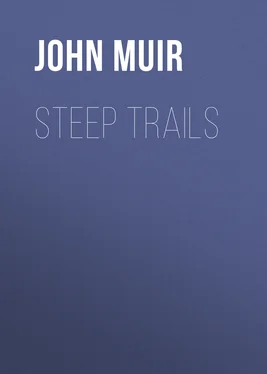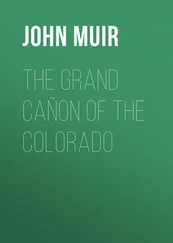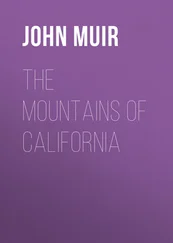John Muir - Steep Trails
Здесь есть возможность читать онлайн «John Muir - Steep Trails» — ознакомительный отрывок электронной книги совершенно бесплатно, а после прочтения отрывка купить полную версию. В некоторых случаях можно слушать аудио, скачать через торрент в формате fb2 и присутствует краткое содержание. Жанр: Путешествия и география, История, foreign_edu, foreign_antique, foreign_prose, на английском языке. Описание произведения, (предисловие) а так же отзывы посетителей доступны на портале библиотеки ЛибКат.
- Название:Steep Trails
- Автор:
- Жанр:
- Год:неизвестен
- ISBN:нет данных
- Рейтинг книги:5 / 5. Голосов: 1
-
Избранное:Добавить в избранное
- Отзывы:
-
Ваша оценка:
- 100
- 1
- 2
- 3
- 4
- 5
Steep Trails: краткое содержание, описание и аннотация
Предлагаем к чтению аннотацию, описание, краткое содержание или предисловие (зависит от того, что написал сам автор книги «Steep Trails»). Если вы не нашли необходимую информацию о книге — напишите в комментариях, мы постараемся отыскать её.
Steep Trails — читать онлайн ознакомительный отрывок
Ниже представлен текст книги, разбитый по страницам. Система сохранения места последней прочитанной страницы, позволяет с удобством читать онлайн бесплатно книгу «Steep Trails», без необходимости каждый раз заново искать на чём Вы остановились. Поставьте закладку, и сможете в любой момент перейти на страницу, на которой закончили чтение.
Интервал:
Закладка:
John Muir
Steep Trails / California, Utah, Nevada, Washington, Oregon, the Grand Canyon
The papers brought together in this volume have, in a general way, been arranged in chronological sequence. They span a period of twenty-nine years of Muir's life, during which they appeared as letters and articles, for the most part in publications of limited and local circulation. The Utah and Nevada sketches, and the two San Gabriel papers, were contributed, in the form of letters, to the San Francisco Evening Bulletin toward the end of the seventies. Written in the field, they preserve the freshness of the author's first impressions of those regions. Much of the material in the chapters on Mount Shasta first took similar shape in 1874. Subsequently it was rewritten and much expanded for inclusion in Picturesque California, and the Region West of the Rocky Mountains, which Muir began to edit in 1888. In the same work appeared the description of Washington and Oregon. The charming little essay "Wild Wool" was written for the Overland Monthly in 1875. "A Geologist's Winter Walk" is an extract from a letter to a friend, who, appreciating its fine literary quality, took the responsibility of sending it to the Overland Monthly without the author's knowledge. The concluding chapter on "The Grand Canyon of the Colorado" was published in the Century Magazine in 1902, and exhibits Muir's powers of description at their maturity.
Some of these papers were revised by the author during the later years of his life, and these revisions are a part of the form in which they now appear. The chapters on Mount Shasta, Oregon, and Washington will be found to contain occasional sentences and a few paragraphs that were included, more or less verbatim, in The Mountains of California and Our National Parks. Being an important part of their present context, these paragraphs could not be omitted without impairing the unity of the author's descriptions.
The editor feels confident that this volume will meet, in every way, the high expectations of Muir's readers. The recital of his experiences during a stormy night on the summit of Mount Shasta will take rank among the most thrilling of his records of adventure. His observations on the dead towns of Nevada, and on the Indians gathering their harvest of pine nuts, recall a phase of Western life that has left few traces in American literature. Many, too, will read with pensive interest the author's glowing description of what was one time called the New Northwest. Almost inconceivably great have been the changes wrought in that region during the past generation. Henceforth the landscapes that Muir saw there will live in good part only in his writings, for fire, axe, plough, and gunpowder have made away with the supposedly boundless forest wildernesses and their teeming life.
William Frederic Bade
Berkeley, California
May, 1918
I. WILD WOOL
Moral improvers have calls to preach. I have a friend who has a call to plough, and woe to the daisy sod or azalea thicket that falls under the savage redemption of his keen steel shares. Not content with the so-called subjugation of every terrestrial bog, rock, and moorland, he would fain discover some method of reclamation applicable to the ocean and the sky, that in due calendar time they might be brought to bud and blossom as the rose. Our efforts are of no avail when we seek to turn his attention to wild roses, or to the fact that both ocean and sky are already about as rosy as possible—the one with stars, the other with dulse, and foam, and wild light. The practical developments of his culture are orchards and clover-fields wearing a smiling, benevolent aspect, truly excellent in their way, though a near view discloses something barbarous in them all. Wildness charms not my friend, charm it never so wisely: and whatsoever may be the character of his heaven, his earth seems only a chaos of agricultural possibilities calling for grubbing-hoes and manures.
Sometimes I venture to approach him with a plea for wildness, when he good-naturedly shakes a big mellow apple in my face, reiterating his favorite aphorism, "Culture is an orchard apple; Nature is a crab." Not all culture, however, is equally destructive and inappreciative. Azure skies and crystal waters find loving recognition, and few there be who would welcome the axe among mountain pines, or would care to apply any correction to the tones and costumes of mountain waterfalls. Nevertheless, the barbarous notion is almost universally entertained by civilized man, that there is in all the manufactures of Nature something essentially coarse which can and must be eradicated by human culture. I was, therefore, delighted in finding that the wild wool growing upon mountain sheep in the neighborhood of Mount Shasta was much finer than the average grades of cultivated wool. This FINE discovery was made some three months ago 1 1 This essay was written early in 1875.
, while hunting among the Shasta sheep between Shasta and Lower Klamath Lake. Three fleeces were obtained—one that belonged to a large ram about four years old, another to a ewe about the same age, and another to a yearling lamb. After parting their beautiful wool on the side and many places along the back, shoulders, and hips, and examining it closely with my lens, I shouted: "Well done for wildness! Wild wool is finer than tame!"
My companions stooped down and examined the fleeces for themselves, pulling out tufts and ringlets, spinning them between their fingers, and measuring the length of the staple, each in turn paying tribute to wildness. It WAS finer, and no mistake; finer than Spanish Merino. Wild wool IS finer than tame.
"Here," said I, "is an argument for fine wildness that needs no explanation. Not that such arguments are by any means rare, for all wildness is finer than tameness, but because fine wool is appreciable by everybody alike—from the most speculative president of national wool-growers' associations all the way down to the gude-wife spinning by her ingleside."
Nature is a good mother, and sees well to the clothing of her many bairns—birds with smoothly imbricated feathers, beetles with shining jackets, and bears with shaggy furs. In the tropical south, where the sun warms like a fire, they are allowed to go thinly clad; but in the snowy northland she takes care to clothe warmly. The squirrel has socks and mittens, and a tail broad enough for a blanket; the grouse is densely feathered down to the ends of his toes; and the wild sheep, besides his undergarment of fine wool, has a thick overcoat of hair that sheds off both the snow and the rain. Other provisions and adaptations in the dresses of animals, relating less to climate than to the more mechanical circumstances of life, are made with the same consummate skill that characterizes all the love work of Nature. Land, water, and air, jagged rocks, muddy ground, sand beds, forests, underbrush, grassy plains, etc., are considered in all their possible combinations while the clothing of her beautiful wildlings is preparing. No matter what the circumstances of their lives may be, she never allows them to go dirty or ragged. The mole, living always in the dark and in the dirt, is yet as clean as the otter or the wave-washed seal; and our wild sheep, wading in snow, roaming through bushes, and leaping among jagged storm-beaten cliffs, wears a dress so exquisitely adapted to its mountain life that it is always found as unruffled and stainless as a bird.
On leaving the Shasta hunting grounds I selected a few specimen tufts, and brought them away with a view to making more leisurely examinations; but, owing to the imperfectness of the instruments at my command, the results thus far obtained must be regarded only as rough approximations.
Читать дальшеИнтервал:
Закладка:
Похожие книги на «Steep Trails»
Представляем Вашему вниманию похожие книги на «Steep Trails» списком для выбора. Мы отобрали схожую по названию и смыслу литературу в надежде предоставить читателям больше вариантов отыскать новые, интересные, ещё непрочитанные произведения.
Обсуждение, отзывы о книге «Steep Trails» и просто собственные мнения читателей. Оставьте ваши комментарии, напишите, что Вы думаете о произведении, его смысле или главных героях. Укажите что конкретно понравилось, а что нет, и почему Вы так считаете.












